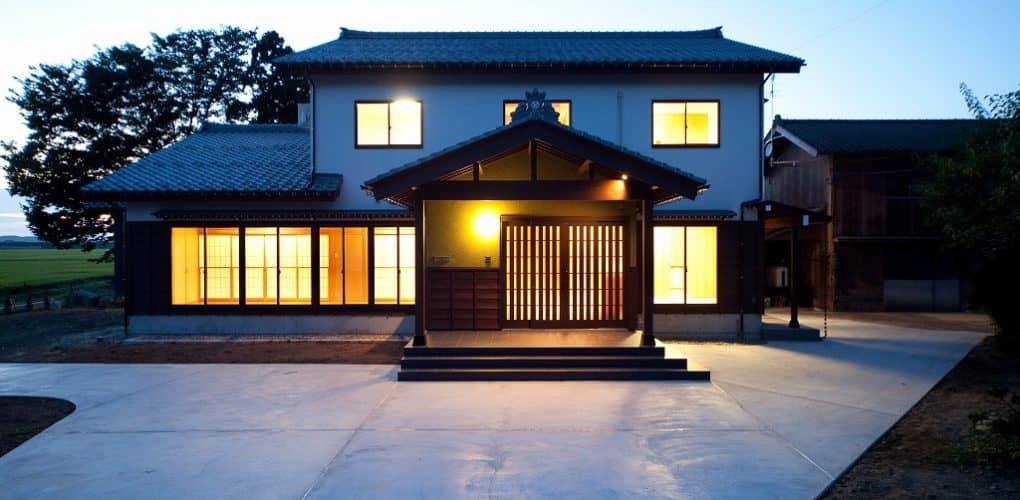Japan’s economy has grown at a record pace post World War II i.e. during 1945 – 1991. One of the major factors for its rapid growth during this period was Japan’s implementation of quality control processes (7 QC Tools) throughout its mass production systems. Japan has several incredibly well-known brands in almost every area you can think of, examples include Sony, Canon, Yamaha, Honda, Suzuki, Toshiba, Casio, etc. providing the world with products having unparalleled quality standards, then why do their own homes have a lifespan of just 30-40 years?
The notion of Japanese Homes having a shelf life of Just 30 years has been perpetuated by the various government departments. According to one such department, The Ministry of Land, Infrastructure, Transport and Tourism (MLIT) of Japan, the average lifespan of a wooden house is 27 ~ 30 years, and for reinforced-concrete apartment buildings, it is around 37 years. However, these figures are just average ages of buildings that were demolished for redevelopment and do not take into account the condition of the property at the time of demolition and the reason for demolition (e.g. a developer may have acquired a group of buildings of various ages in a block to redevelop into a larger high-rise).
Japanese people historically built buildings to last. Many old Japanese houses are in fact hundreds of years old. Kiyomizudera, a temple in Kyoto, is more than 1,200 years old (it is the oldest, non-reconstructed wooden building in the world). So, in the middle of all this what changed?
Looking into the history, there were many natural and manmade calamities few of which shall help us understand more:
- The Great Kanto Earthquake (1923): Japanese houses were traditionally made of wood because these types of houses do not sway or break off easily and hence were less vulnerable to earthquakes, but wood doesn’t do well against fire. Back in 1923, Tokyo was devastated by the Great Kanto Earthquake, and the fires caused by the earthquake burned the city center to the ground [a major setback]. Around over 1,40,000 people were reported missing and 3,00,000 houses were destroyed.
- World War II and Firebombs: Then in 1944-45 there was World War II and the firebombing of the cities, much of Tokyo was laid waste by the bombings and by October 1945 the population had fallen to 3.49 million, half of what it was in 1940.
- History of Severe Natural Disasters: Due to its climatic and geological conditions, Japan experiences a variety of natural disasters including torrential rain caused by typhoons, seasonal rains, volcanic eruptions, and earthquakes.
- Revision in Earthquake codes: There was a massive earthquake off the shore of Miyagi Prefecture (in 1978) so in 1981 the earthquake standards became more stringent. This meant that any house built before the new earthquake codes were not as valued as those built after. The codes again went under a revision for wooden houses in the year 2000.
To Conclude, Yes, In Japan, a house becomes worthless after just 30-40 years but it is definitely not because they don’t know the trade or their workers are unskilled. It is because:
- The country in the last century has faced so many setbacks in the above-mentioned ways that it was compelled to push quality or a top-notch housing to a back seat and just build homes rapidly.
- Additionally, every few decades or so in the 1900s, some major mishap (like an earthquake, typhoons, tsunami, etc.) has occurred in Japan that has necessitated the re-building of housing stock and a revision in the earthquake codes. The continuous updating of stringent earthquake codes placed the already constructed houses under the unsafe category.
- On top of the safety reasons, another contributing factor to the short-life of Japanese housing is the fact that wooden houses for tax purposes completely lose all its value after 22 – 40 years.
So, what is newly built Japanese houses like today?
The newly built houses in Japan are built from precut wooden components in factories and then they are shipped to the location for assembly. They also have insulation and double pane windows. Because of the earthquake standards, the wooden columns are bolted down to the foundation and the homes are structurally sound. Since they are built of wood the 2 major factors for longevity besides earthquakes are rot and termites. If well maintained and cared for experts say the life span will be double (i.e. 60-70 years) the current average age of demolished houses.
Source: Tokyo Metropolitan Government
PS: On an average, there are four times as many Architects in japan as compared to that in India, this is while Japan is just 1/11th the size of India when compared in terms of population. Japan is rebuilding its real-estate in about every 3 decades and this time with contemporary designs, higher energy efficiency, and greater sustainability thus doubling the lifespan of homes. On the other hand, India is in a stage where we still have to build a shelter for our 1.77 million homeless people. This can be seen as an opportunity for job creation in the Real estate in Indore and India overall, and also an overall growth in real estate markets in Indore. Unlike the real estate agents in Indore, the agents in Tokyo sell inventories by tapping into the fear of customers from earthquakes and other natural disasters; on the other hand, the real estate projects in Indore are feeding the basic necessity and the engraved idea of “Khud ka Ghar” in people’s mind.
“Investing in real estate is smart because a property is tangible. People always have, and always will need shelter. This means it is very unlikely that our need for shelter (i.e. buying or renting homes) will ever go away.” – Kathy Fettke, CEO and Co-Founder of Real Wealth Network, and the host of The Real Wealth Show.
Author: Sagar Sohani
Civil Constructions, Home Interiors & Renovations!
To know more about our team and our services, please click here
To read more of such interesting blogs, please click here


